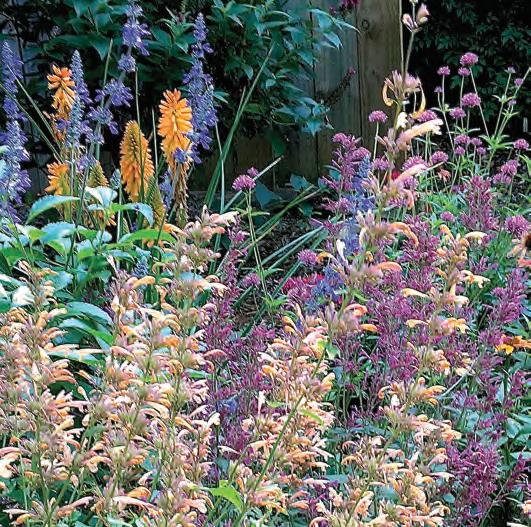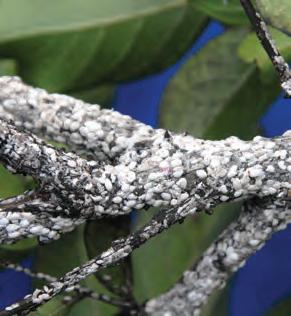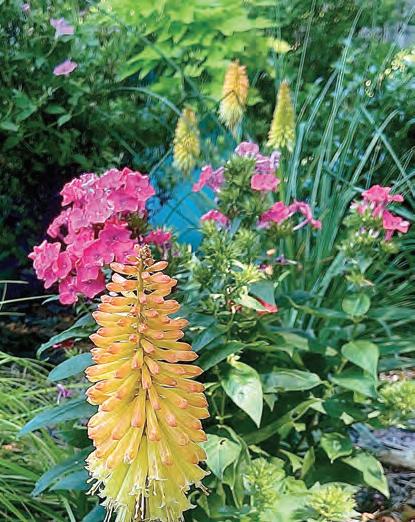
3 minute read
Solano County Listings: Homes for sale
LOTS & LAND
Scale
From Page 9 insecticides have the potential to harm our good insects: our pollinators like bees and butteries, and perhaps more importantly, the natural enemies of crape myrtle bark scale.
Is it okay to plant crape myrtles now?
Hendee recommends pausing the planting of crape myrtles. He suggests increasing the diversity and complexity of your landscape to provide habitat for the good insects, including the natural enemies that are likely to control this pest long-term (such as predatory insects and parasitoid wasps and flies). A good place to start is by adding more flowering and regionally-native plants, he said.
How many crape myrtle trees have crape myrtle bark scale?
For most of our towns or metropolitan areas where crape myrtle bark scale is discovered, we ultimately can expect a 80% to 100% infestation, Chen said. The pest spreads rapidly particularly when crape myrtle trees are planted close to one another. The infestation has spread over most of the south and crape myrtle bark scale has been spotted as far north as Maryland and Delaware.
MOBILE/FLOATING
Commercial
Can crape myrtles that have bark scale recover?

Yes, soil drench of neonicotinoids (a class of insecticide) is very effective at controlling the scale’s population, Chen said, and trees can fully recover and thrive. However, she said, this is also the worst treatment concerning potential toxicity (neonics in pollen) to bees. Repeated treatments are often needed due to re-infestation in a year or two when the effect of that treatment wears off and when there are other infested trees in vicinity.
If a crape myrtle recovers, can it get infected again?
Yes, Chen said. Treated trees can get re-infested, and trees planted behind buildings or on traffic islands and along highways where they are neglected are common sources for re-infestation.
Trees won’t be able to get immunity from the pest. On the contrary, Chen said, infested trees remain vulnerable to re-infestation of the same scale – especially when the natural enemy population (lady beetles, lace wings, etc.) becomes low due to insecticide use to treat the scale.
Chen said researchers have seen outbreaks of high numbers of the scales after the use of some insecticides because these are more effective on the lady beetles (adults and nymph) than on the scales. So using low-risk (to natural enemies) and natural products such as insect growth regulators and ultrafine horticulture oil may help because they don’t eradicate natural enemies. The goal to completely remove the scales can be achieved but the victory is usually temporary.
There are 34 recipes available at www.ezcapes. com showing you how to partner perennials like Pyromania Blaze red hot poker, ornamental grasses and the new Luminary Sunset Coral tall garden phlox.
Winter
From Page 5 visit the website, you’ll see they further suggest Dolce Wildberry heuchera and Shadowland Coast to Coast hosta. At your garden center, you can tweak the recipe you like based on availability or preference.

The Garden Guy planted Dark Side of the Moon astilbe with Dolce Appletini heuchera, which will dazzle next to the purple foliage of the astilbe, along with Shadowland Empress Wu, the Proven Winners Hosta of the Year with blue leaves, and Shadowland Autumn Frost hosta with creamy yellow and green leaves. My inspiration came from the EZ Scape recipe.
As you look at the artist the thought process going, know that you can steal a plant from one recipe and incorporate it into your plan as needed. The website will you. a breeze, but it will also stir up the artistic designer in you. You will feel that inner Monet stirring.

As you look at the recipes, you will see the newest Luminary tall garden phlox, this year’s hot new Meant to Bee agastache and Color Coded coneflowers. But you may find that it will eliminate the hesitancy you possess in trying certain flowers. Every time I post a photo of my Pyromania red hot pokers or kniphofia, I can tell gardeners want to try them but have worries. This website will help you. I promise, you are about to embark on the most gardening fun ever, and that is growing perennials.
Norman Winter is a horticulturist, garden speaker and author of “Tough-asNails Flowers for the South” and “Captivating Combinations: Color and Style in the Garden.” Follow him on Facebook @NormanWinterTheGardenGuy.
This is the fabulous home you’ve been waiting for, located in the historic district of Woodland. From the moment you step inside the majestic entry way, the stunning woodwork will leave you wanting more. With a freshly painted interior and French doors that lead to an outside covered patio, this home is perfect for entertaining. The Gourmet kitchen opens to a family room surrounded by wood framed windows. You’ll have plenty of room for a big Thanksgiving dining table. Downstairs includes a bedroom and full bath. This spacious home with fabulous architectural details won’t last!










